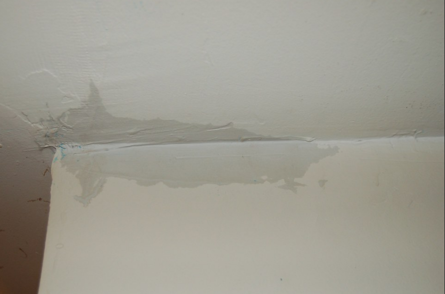Do's & Don'ts of Water Damages.
Do's & Don'ts of Water Damages.
Blog Article
Were you searching for suggestions around Simple Solutions To Preventing Fire And Water Damage To Your Home?

Water offers life, water invasion on components where it's not supposed to be can result in damages. It can peel off away surface areas and also erode the structure if the water soaks right into your structure. Mold and mildew and mold also thrive in a wet setting, which can be harmful for your health. Residences with water damages odor old and moldy.
Water can come from several resources such as hurricanes, floods, burst pipes, leaks, and sewer concerns. In case you experience water damages, it would be excellent to understand some security precautions. Below are a couple of standards on just how to handle water damages.
Do Prioritize Home Insurance Coverage
Water damages from flood dues to heavy winds is seasonal. You can likewise experience a sudden flooding when a faulty pipe instantly ruptures right into your residence. It would be best to have residence insurance that covers both disasters such as all-natural catastrophes, and emergencies like broken plumbing.
Don't Fail To Remember to Shut Off Energies
In case of a disaster, specifically if you live in a flood-prone area, it would certainly be advisable to switch off the major electric circuit. This removes power to your entire home, avoiding electric shocks when water can be found in as it is a conductor. Moreover, don't neglect to shut off the major water line valve. Furnishings will move about and cause damages when floodwaters are high. Having the primary valve shut down avoids further damages.
Do Stay Proactive and Heed Weather Signals
Tornado floods can be very unforeseeable. Remain ready and also aggressive if there is a background of flooding in your community. Pay attention to evacuation cautions if you live near a lake, river, or creek . Obtain valuables from the ground floor and basement, then put them on the highest feasible degree. Doing so minimizes potential home damages.
Don't Overlook the Roof
You can prevent rainfall damages if there are no holes and also leakages in your roof. This will stop water from moving down your wall surfaces and also soaking your ceiling.
Do Take Note Of Little Leakages
A burst pipeline does not happen over night. You may see bubbling paint, peeling wallpaper, water streaks, water stains, or leaking noises behind the wall surfaces. Have your plumbing fixed before it results in large damages.
Don't Panic in Case of a Ruptured Pipe
Maintaining your clearheadedness is crucial in a time of situation. Panicking will only worsen the issue since it will suppress you from acting quick. When it pertains to water damages, timing is essential. The longer you wait, the even more damages you can anticipate. Thus, if a pipeline bursts in your home, right away shut off your major water shutoff to remove the source. After that unplug all electrical outlets in the location or switch off the circuit breaker for that part of the house. Ultimately, call a credible water damage restoration professional for help.
Water offers life, water invasion on components where it's not supposed to be can result in damages. Residences with water damage odor old and also moldy.
Water damage from flood charges to heavy winds is seasonal. You might notice bubbling paint, peeling wallpaper, water touches, water discolorations, or dripping noises behind the wall surfaces. When it comes to water damages, timing is crucial.
Some Do's & Don't When Dealing with a Water Damage
DO:
Make sure the water source has been eliminated. Contact a plumber if needed. Turn off circuit breakers supplying electricity to wet areas and unplug any electronics that are on wet carpet or surfaces Remove small furniture items Remove as much excess water as possible by mopping or blotting; Use WHITE towels to blot wet carpeting Wipe water from wooden furniture after removing anything on it Remove and prop up wet upholstery cushions for even drying (check for any bleeding) Pin up curtains or furniture skirts if needed Place aluminum foil, saucers or wood blocks between furniture legs and wet carpet Turn on air conditioning for maximum drying in winter and open windows in the summer Open any drawers and cabinets affected for complete drying but do not force them open Remove any valuable art objects or paintings to a safe, dry place Open any suitcases or luggage that may have been affected to dry, preferably in sunlight Hang any fur or leather goods to dry at room temperature Punch small holes in sagging ceilings to relieve trapped water (don't forget to place pans beneath!); however, if the ceiling is sagging extremely low, stay out of the room and we'll take care of it DO NOT:
Leave wet fabrics in place; dry them as soon as possible Leave books, magazines or any other colored items on wet carpets or floor Use your household vacuum to remove water Use TV's or other electronics/appliances while standing on wet carpets or floors; especially not on wet concrete floors Turn on ceiling fixtures if the ceiling is wet Turn your heat up, unless instructed otherwise

Do you appreciate more info about Simple Solutions To Preventing Fire And Water Damage To Your Home? Try leaving a remark down the page. We would be pleased to know your views about this article. We hope that you come back again later on. Sharing is caring. Who knows, you may just be helping someone out. Thanks a lot for going through it.
Report this page